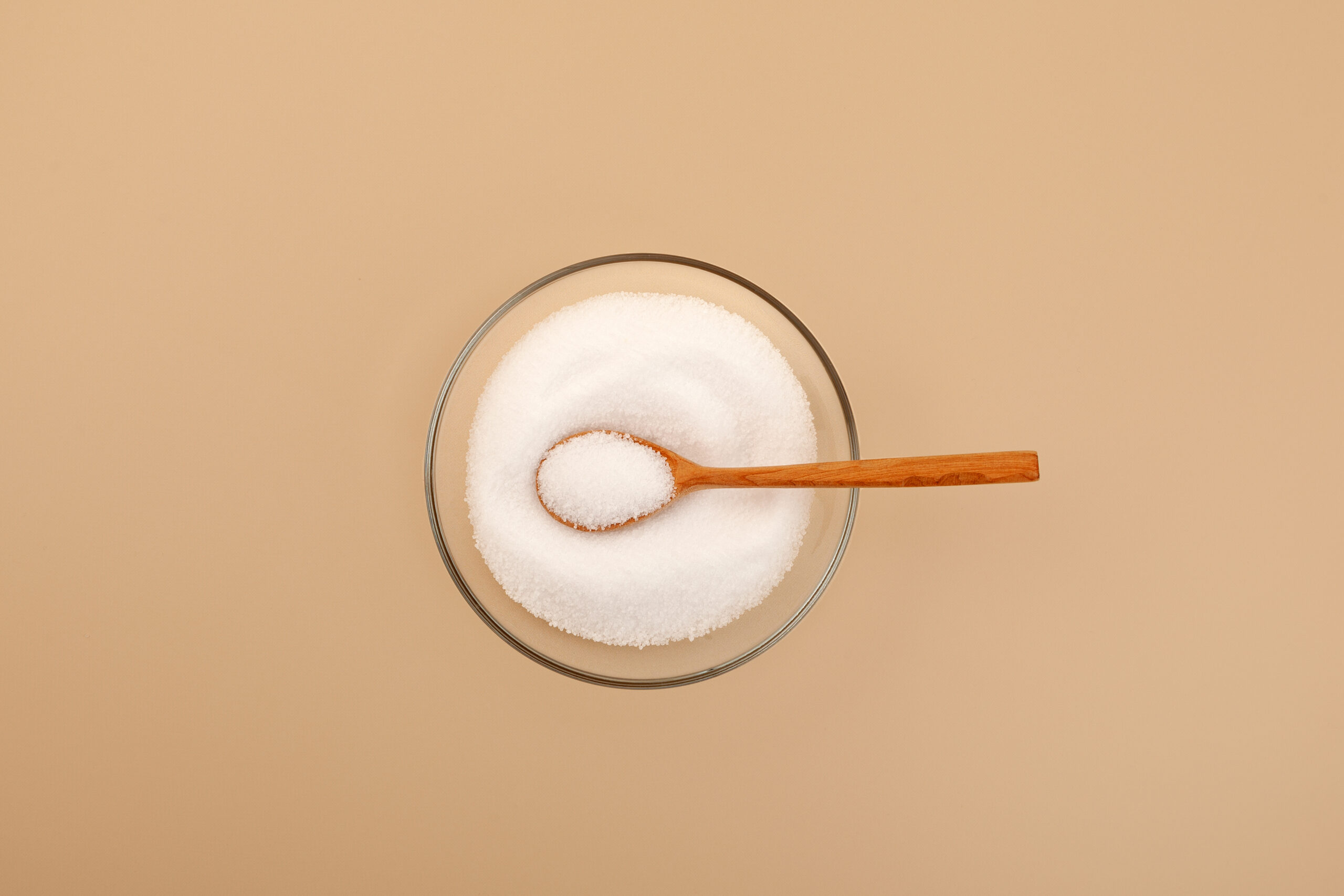There is now a better option for people who enjoy eating sweets but are concerned about their health and the potential difficulties that consuming high-calorie sweet foods may bring. They need not quit eating sweets, and they should no longer say no to sweet foods. This is made possible by the discovery of artificial sweeteners or sugar substitutes. Sugar substitutes are either natural or artificial (chemical) substances that are used to sweeten food without adding calories. One of the artificial sweeteners that is being widely used is acesulfame K. Acesulfame K, also known as acesulfame potassium, is a no-calorie sugar substitute. It is 200 times sweeter than sugar and is often used in combination with other sweeteners as it enhances and sustains the sweet taste of food and beverages. It is used in products such as candies, baked goods, beverages, frozen desserts, dessert mixes, and table-top sweeteners.
About Acesulfame K
Acesulfame K was accidentally discovered by Karl Clauss and Harald Jensen in 1967 after the accidental discovery of another similar compound. Karl Clauss, after picking up the chemical he was working with, unknowingly licked his finger to pick up a piece of paper and noted that his fingers tasted sweet. Acesulfame was approved by the FDA in 1988 after a series of studies proved that it was safe to use.
Acesulfame K is also known by other names, such as low-calorie sweeteners, calorie-free artificial sweeteners, Ace K, non-nutritive sweeteners, artificial sweeteners, or sugar substitutes. It is also known by its brand names, Sunett and Sweet One. Acesulfame K is composed of carbon, oxygen, nitrogen, sulphur, and potassium. Acesulfame is most often used as a potassium salt for its solubility. In addition to being used in foods and drinks, it is also used in several medications like mouthwash, toothpaste, and cough drops.
Daily recommended allowance
The FDA has recommended a specific amount of daily acesulfame K intake called “Accepted Daily Intake (ADI). ADI is expressed as the amount of acesulfame K in milligram (mg) per kilogram (kg) body weight (mg/kg). ADI says that the safest amount of acesulfame K that a person can consume over his lifetime. The acceptable daily intake of acesulfame K is 15 mg/kg of body weight.
Safety of Acesulfame
Many safety studies have been conducted by several independent agencies and also by approved government agencies to determine the safety of acesulfame K. More than 90 studies have shown no adverse results after using acesulfame K in moderate amounts. The U.S. Food and Drug Administration (FDA) has approved the use of acesulfame after thoroughly evaluating its safety. It is an approved artificial sweetener that is used in many products in more than 100 countries.
Pros
The compound is 200 times sweeter than sugar and is quickly soluble. It is stable over a wide range of pH and temperature, so it can be used in baked products. It has a clean taste without any aftertaste. It is suitable for dry and semi-dry applications. There is no increase in calories as the body does not metabolize it. It is excreted in the urine without being changed. Therefore, it helps reduce calories and control weight without affecting the glucose or triglyceride levels in the body. Acesulfame gives a synergistic sweetening effect by enhancing and sustaining the sweetness of food when used in combination with other sweeteners. It is very useful for people with diabetes. Also, it does not cause tooth decay. Unlike other sweeteners, it does not result in cancer, headaches, or any gastrointestinal effects. It is safe for consumption even in pregnant women. It is suitable for use in chewing gum as a slow-releasing sweetener. It is an approved product that is used in a number of foods and beverages in more than 100 countries.
Cons
In spite of having so many pros to its credit, acesulfame K has few cons, just like any other compound. It gives a slight aftertaste if used at a higher concentration than the normal usage level. Several studies on rodents show that Acesulfame K contributed to many complications like tumour development in the lungs, breast, and thymus; leukaemia; and chronic respiratory disease. This has resulted in many controversial conclusions about the use of Acesulfame K.
Conclusion
The discovery of artificial sweeteners is, no doubt, a revolutionary step forward in the field of science. It has proved beneficial to many people who suffer from diabetes and obesity and is safe to consume. However, despite discussing so many pros of using Acesulfame K, the results of various studies conducted on rodents cannot be ignored and leave us in a great dilemma.



